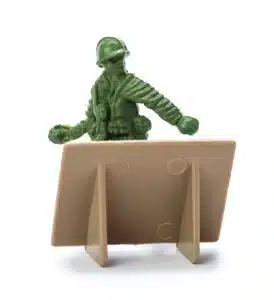The Role of Action Figures in Imaginative Play
Introduction
Imaginative play is an integral part of a child’s development. It not only enhances their creativity and problem-solving skills but also helps in improving their social, cognitive, and emotional abilities. One tool that has played a significant role in facilitating imaginative play throughout generations is action figures. In this blog article, we will explore the importance and influence of action figures on a child’s imaginative play and how they contribute to their overall growth and development.
Features of Action Figures
- Realistic designs
- Various sizes and shapes
- Articulated limbs and joints
- Detailed clothing and accessories
- Popular characters from movies, comics, or TV shows
- Collectible nature
The Power of Action Figures in Imaginative Play
Action figures have become a staple in children’s playrooms for good reason. They offer numerous benefits that contribute to the development and growth of a child’s imagination. Let’s delve into the role they play in imaginative play:
1. Encourages Storytelling and Role-playing
Action figures act as catalysts for storytelling and role-playing scenarios. By creating narratives, children can explore different characters, emotions, and situations. This process allows them to develop their communication skills, as well as their ability to understand and empathize with others.
2. Fosters Creativity and Problem-solving
Action figures provide children with the opportunity to think outside the box and come up with creative solutions to problems. They can invent new adventures, build imaginary worlds, and develop strategies to overcome obstacles. This creative problem-solving translates into real-life situations as well, teaching children to think critically and adapt to various challenges.
3. Enhances Fine Motor Skills
Manipulating action figures helps improve a child’s dexterity and fine motor skills. Picking them up, moving their limbs, and setting up accessories require precision and coordination. This type of play supports the development of hand-eye coordination and finger strength, which are essential for various daily activities and academic tasks.
4. Promotes Social Interaction
Action figures can facilitate socialization and cooperative play among children. They can engage in imaginative play together, taking turns and sharing ideas. By doing so, they learn important social skills like negotiation, compromise, and collaboration. These skills are crucial for building relationships and functioning well in a group setting.
5. Sparks Imagination
Action figures ignite a child’s imagination by offering them a creative outlet. With these toys, children can go on exciting adventures, explore different careers, or even simulate everyday activities. This imaginative play fosters curiosity and the ability to think beyond the obvious, allowing for the development of innovative thinking and problem-solving skills.
Conclusion
Action figures have stood the test of time as an essential tool for imaginative play. Their realistic features, collectible nature, and ability to spark creativity make them valuable assets in a child’s toy collection. From encouraging storytelling and role-playing to enhancing fine motor skills and promoting social interaction, action figures have a significant impact on a child’s development. So, go ahead and let your child’s imagination soar with the power of action figures!





